Freight shipping hazardous materials is a great responsibility that requires adherence to the rules and regulations that are in place. From labeling to packaging, there are a lot of different factors that need to be addressed. Failing to comply with the requirements can have serious consequences from the Department of Transportation (DOT).
The Hazardous Materials Transportation Act (HMTA) of 1975 regulates the transport of hazardous materials. This includes materials that are:
Additionally, all hazardous materials must be shipped in adherence with the nine HAZMAT classes as defined by the DOT.
Below, we’ll guide you on how to ship hazardous materials and the different rules and regulations that are in place today.
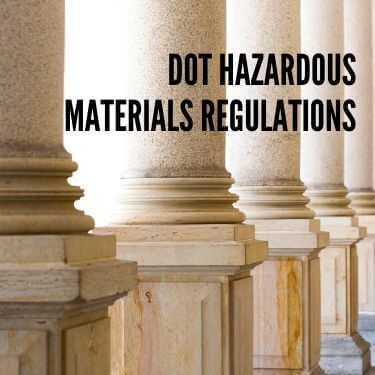
There are a number of different rules and regulations that are in place when it comes to freight shipping hazardous materials. The federal Hazardous Materials Transportation Act of 1975 (HMTA) has defined such materials or substances as an unreasonable risk to property, safety, or health if not regulated during transport.
When the act was implemented, the DOT identified over 3,000 different types of materials that required regulation. There are also thousands of materials that have not yet been named that are regulated because of their infectious, corrosive, flammable, explosive, or hazardous nature.
According to the DOT, hazardous materials are divided up into nine classes. Those classes are as follows:
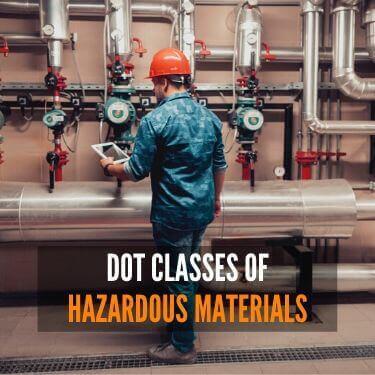
An example of hazardous materials that are commonly shipped, especially around New Year and the 4th of July, is fireworks. Most people may not be aware of this, but you simply cannot toss a crate of fireworks on a truck and ship them, in the same manner, you freight ship other typical goods.
Fireworks are both a class 3 and class 4 material that is heavily regulated in terms of freight shipping, both in the country as well as any imported fireworks from China. Fireworks are a hazardous material, and they are one of many forms of hazardous materials you need to be aware of any and all regulations associated with them.
Dealing with the DOT as it relates to hazardous materials requires meticulous and careful planning. Speaking with a hazmat freight shipping professional would be ideal so that your questions can get answered while getting a fast quote.
If a package contains hazardous materials, proper labeling is required for freight shipping. The label is important because it indicates the sort of hazard that the material poses which is being transported. The label will be based on the class of the hazard.
Printing distributors are responsible for making DOT-approved labels for freight shipping. Manufactured labels must be in accordance with the specifications that have been released by the DOT in terms of color, shape, and size.
There are instances where specification packaging could contain more than one hazard. Section 172.101 of the PHMSA states that if a hazardous material has a primary hazard, it may also have secondary hazards as well.
For example, the primary hazard of a certain chemical could be that it is ignitable or flammable. However, the secondary hazard may be that it is also reactive or corrosive as well. In these instances, there are specific rules in place regarding how such a shipment should be packed and labeled.
Now, we are going to take a look at the different required shipping documentation forms that are associated with hazardous materials. In some instances, there are going to be two sets of paperwork that are linked with a hazardous shipment:
These two forms can be combined in some cases. An emergency telephone number is required in the documentation. This phone number requires 24/7 accessibility and can be called if there is a problem.
Handling hazardous materials require extensive training in order to safely handle these substances or materials. Training requirements are spelled out in Subpart H 49 CFR 172.700 - 172.704. Training refers to a systematic program that will make ensure proper employee awareness and handling knowledge:
All hazmat training includes initial and recurring testing, in-depth security training, security awareness training, safety training, function-specific training, and more. For safety training, areas that are covered include:
Anyone who handles hazardous materials will have 90 days to complete any and all required training. Training records are kept in order to validate the certifications of the handler by name, address, and any training provided and completed.
Freight shipping hazardous materials carries a more significant cost than standard shipping. The reasons for the added cost are primarily due to the additional risks and procedures involved in handling these volatile goods. These higher costs associated with hazmat shipping can also be attributed to the fact that these goods often require isolation from other transported goods.
Even if hazardous freight doesn’t occupy an entire truckload, it may be the only item shipped because it’s harmful to other freight. All associated costs entailed and any extra expenses will be accounted for in relation to the transport of your hazardous materials.
The best way to determine the cost of shipping hazardous materials is to get a hassle-free hazmat freight rate quote from a strategic partner like R+L Global Logistics.
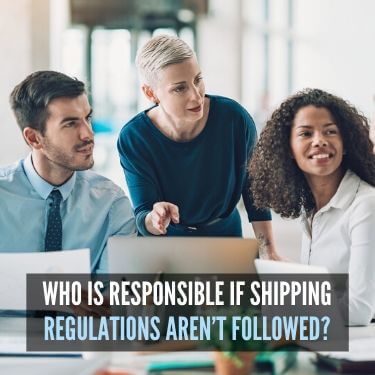
It’s important to recognize that there is a shared responsibility between the shipper and the transportation company. Shippers need to be upfront and transparent about the goods they’re shipping.
If vital additional information is not shared and leads to non-compliance, the responsibility can lie with the shipper. The transportation company has its own guidelines that they follow in terms of handling, loading, and unloading freight. The following illustrates both the shipper and carrier’s responsibilities:
Shipper’s responsibilities: When it comes to shipping materials that are hazardous, there are specific actions the shipper is going to be responsible for completing. This includes determining whether the shipment is hazmat, as well as, fulfilling the responsibilities associated with the following:
Carrier’s responsibilities: The shipper’s and carrier’s responsibilities tend to overlap. Whenever a shipper requirement is performed by the carrier, the carrier needs to finish the function in accordance with the rules and regulations.
Carriers are responsible for making certain that the space for the cargo in the vehicle is suitable for the materials that are being shipped. The truck has to be in good mechanical condition. They also need to ensure that the materials have been correctly described and packaged by the shipper.
There are specific insurance requirements that hazardous material transporters face when shipping dangerous goods. Depending on the cargo, shipping companies must provide insurance liability, typically between one and five million dollars.
If carriers do not comply with the insurance requirements that are in place regarding the shipment of hazardous materials, they will be subject to fines and civil penalties, as well as potential incarceration.
Your transportation of hazardous materials insurance policy covers liability for ongoing contamination, site pollution clean-up operations, in-transit coverage, and loading and unloading cargo.
| Material Type | Liability Insurance Coverage |
| Non-Hazardous Material Shipment | $750,000 Average |
| Hazardous Material Shipment | $2,000,000 to $5,000,000 Average |
Premiums differ greatly from carrier to carrier. Get expert help and a quote from R+L Global Logistics Truckload Shipping today!
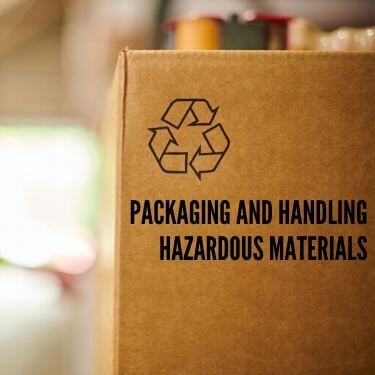
There are a number of factors to consider when packaging and handling hazardous materials. After all, incorrectly packaging and/or handling hazardous freight can lead to dangerous leaks, spills, and exposure.
When refrigerators are being used for chemical storage, or for media or samples, you need to use labels, such as “Caution Do Not Store Food or Beverages in This Refrigerator.” So long as these labels are affixed securely to the refrigerator and they are legible, you will be able to fabricate them yourself.
You do not need to put any posting on refrigerators that are situated outside of the hazardous materials storage area and are used for food and beverages.
Incompatible chemicals need to be segregated from one another if they pose any type of potential risk. For example, storing flammable solvents and oxidizing acids in different locations. This is important to stop incompatible chemicals from mixing inadvertently, which can result in explosions, fire, heat, and the production of harmful vapor and gases.
Keeping track of which materials are compatible and can be shipped together can be quite a struggle. Federal regulations explicitly state this in 49 CFR 177.848 through the use of a hazardous materials segregation table based on the individual class of each item.
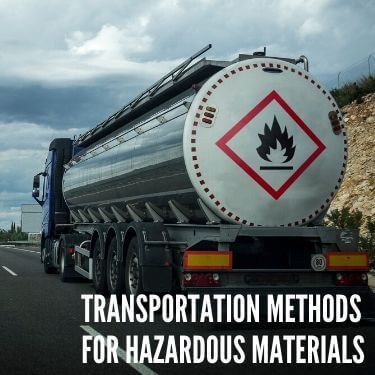
Hazardous cargo movement is a standard part of the business of shipping lines, barge operators, and big railroads. It is estimated by DOT that there are roughly 45,000 carriers in all modes that have operations and equipment that are specifically dedicated to transporting hazardous materials.
At present, there are around 400,000 large trucks dedicated to providing a hazardous materials service, as well as 3,000 tank barges operating on coastal waterways and inland in this domain. Additionally, there are 115,000 railroad tank cars.
The Department of Transportation also believes that there are a minimum of 500,000 trucks that transport materials of a hazardous nature on a periodic or occasional basis.
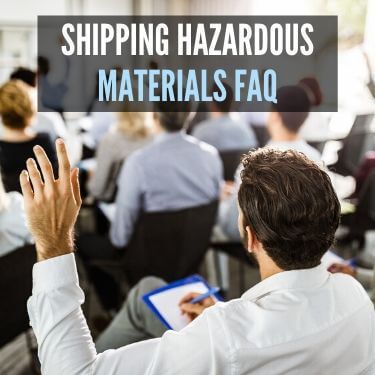
There are a number of questions that you may have about shipping hazardous materials. Here are a few commonly asked questions that may be of assistance to you. The Department of Transportation (DoT) will regulate these shipments during transit. They will set the standards for smaller quantity packages and labeling.
Aside from this, the NRC will oversee nuclear material transportation and ensure that safety is adhered to. This is through the use of a combination of a system of monitoring to ensure requirements are being met, inspections, transportation package certification, and setting regulatory requirements.
The shipper of the goods will generate a commercial invoice to declare the financial value of the goods that have been exported. Foreign customs agents will use the declared value to evaluate monetary duties that must be paid for before the package clears customs.
Infectious substances are those that are known or are reasonably expected to have pathogens in them. What is a pathogen? A pathogen is a microorganism, for example, fungus, parasites, viruses, and bacteria, as well as other agents such as prions, which can cause disease in animals or humans.
There are two groups of infectious substances. The first is Category A, which is infectious substances that can cause fatal disease, life-threatening disease, or permanent disability when an otherwise healthy animal or human is exposed to it. Any other infectious substance will fall into Category B.
Hazardous waste manifests, which are the shipping papers, need to be kept for at least three years once the initial carrier has accepted the material. The shipper must keep the papers for two years once the initial carrier has accepted them. Carriers need to keep the shipping papers for one year once the material has been accepted.
The shipper is responsible for making sure that the materials are classified and identified properly. Moreover, they are also responsible for packaging, marking, and labeling these standards. There are national and international regulations, which are put in place for dictating what is a hazardous material and what isn’t.
Navigating the ins and outs of freight shipping hazardous materials is difficult and different for every transport. There are variables to consider and regulations to follow, which might be different depending on the load. We have dedicated experts that can field any question you might have regarding your hazmat shipment.
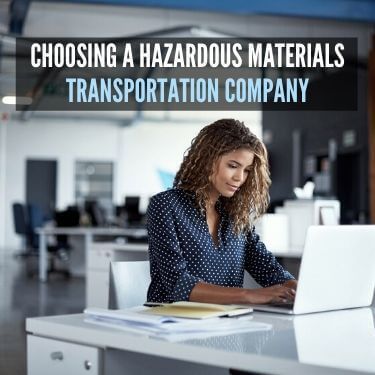
There are a number of different factors that you need to consider when you are looking for a company to transport hazardous materials for you. Below are some of the factors related to transporting hazardous material in further depth to give you a helping hand.
Be sure the company is equipped to meet your needs: The first thing you need to do is make sure that the company you choose is able to fulfill your requirements. After all, there are many different reasons for needing a hazardous materials transportation company.
You may need to transport explosives from one country to another while another business owner may be looking for someone to assist with their hazardous waste. This is why it is important to take a look at the services the company offers and its area of specialty. This will help you to determine whether or not the company in question is right for you.
Don’t automatically go with the lowest price: While the price is important, do not let it be the only determining factor. Simply looking for the cheapest hazardous materials transportation company you can find is a recipe for disaster.
While looking for a good deal is always important, don’t let the price be the final determining factor. Make sure the company can fulfill all of your requirements and that they have a good reputation.
Confirm regulatory compliance: You will also need to conduct due diligence to make sure that the company is one that can be trusted. Make sure that all employees have received the required level of training, which is a requirement as per the DOT.
Licenses with the DOT, Department of Toxic Substances Control (DTSC), and the EPA are required depending on the goods they transport.
Need help freight shipping hazardous materials? At R&L Global Logistics, we have many years of experience in the industry transporting hazardous materials and we can ensure your freight reaches its destination safely and securely.
Our expansive network of trusted carriers and providers ensures that we can find the right match for freight shipping your hazardous materials. Whether it’s a shipment within the state or across the country, we’ll help you get the job done with flexibility and real-time freight visibility.
We understand logistics inside and out and we are ready to be your strategic partner. Our team of experienced professionals moves hazardous freight material daily, our unmatched level of service and reliability is widely known in the industry as a brand you can trust. Call us today at (866) 353-7178 or click get a quote here. We’re standing by and ready to handle hazardous freight shipping needs.
R+L Global Logistics
315 NE 14th St., Ocala, FL 34470